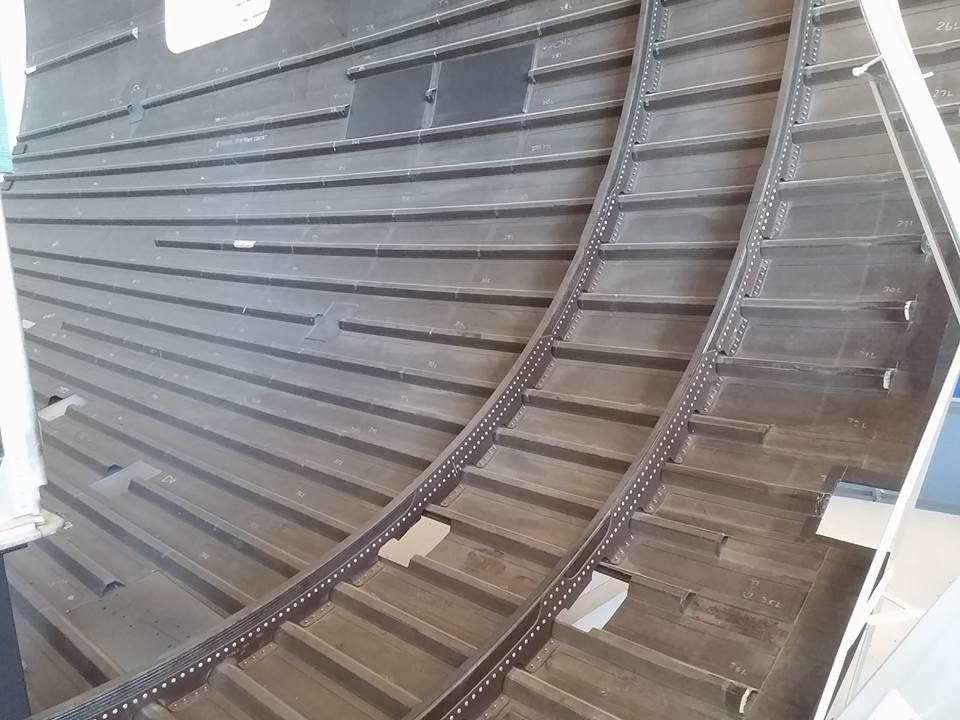Piece of a 787 hull at Future of Flight. Visited with the kids Saturday. All carbon fiber. Compared to the thousands of rivets on the metal hull, I wondered what took them so long.
Probably if I had taken the Boeing tour I would know, but the stringers looked small compared to the hull thickness.
The hull is too large to co-cure, so the stringers probably help joining the sections. And help with global loads. I doubt if they help much with the pressure vessel.
This is interesting as my builders are facing rapidly increasing core costs, and decreasing shear strength. Stringers and frames are looking more attractive. Is interesting to see what unlimited funds for structure analysis came up with. My builder Terry Neilson uses glass over a pvc pipe half round.

Looked at the original center section body mold for the 787 in Janacki’s shop when the project first started. About 1″ thick of autoclaved carbon. Bolted solidly to a steel frame. The first parts didn’t match up to the nose and tail that were built in Italy or Japan.
Put the project a year or so behind. Anybody else see the possible cause like I did walking by the mold?
Most metal boats have stringers now. Trapeze cross section as this one, half pipe, angle iron (L or T). It is the cheapest most reliable method if you factor in time. I’ve seen L angle iron also on wooden boats. For composite should be easier with foam and cloth glued in place by epoxy.
How about pultruded FRP channel. Then you get the fibers going the right direction. What size/spec would be the equivalent of wood stringers in CM hulls?
I only wonder about the feasibility of stringers & frames for one-off construction. It’s easy to see how, if working with a female production mold, one could lay up a CF skin and then add stringers. But I struggle to think about how to make this practical for a one-off since you need a faired surface somewhere against which to lay up the CF or FG. What are we to do…make a CM plug and lay up against that? Perhaps with some creative thinking it’s possible without a huge increase in labor over foam core.
My current boat (an L-7) is stringer & frame, but then again, it’s cold-molded ply 🙂